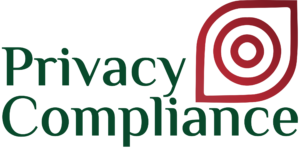[GDPR] Privacy Impact Assessment
Performing a Privacy Impact Assessment (PIA) is an essential process that organizations undertake to ensure that their operations comply with data protection regulations and that they are protecting the privacy rights of individuals. A PIA is required under the GDPR for certain types of processing activities that are likely to result in high risks to the rights and freedoms of individuals.
The process of performing a PIA involves several steps, beginning with identifying the processing activities. This step involves identifying all data processing activities that are subject to the PIA, including data collection, storage, use, and disclosure activities. The next step is describing the processing activities, where the organization documents the processing activities in detail, including the types of data being processed, the purposes of the processing, and the legal basis for the processing.
The third step is identifying privacy risks, which involves identifying any potential privacy risks associated with the processing activities, including risks to personal data, individual rights, and freedoms. Once the privacy risks have been identified, the fourth step is evaluating privacy risks, where the likelihood and severity of each privacy risk are evaluated. This step involves considering the potential impact on individuals, the organization, and other stakeholders.
The fifth step is developing mitigation strategies, where the organization develops strategies to mitigate identified privacy risks. This may include implementing technical or organizational measures, such as encryption or access controls, or modifying the processing activities. The sixth step is consulting with stakeholders, which involves consulting with data subjects, data protection authorities, and other relevant parties to obtain feedback on the proposed mitigation strategies and ensure compliance with data protection laws and regulations.
The final step is implementing and reviewing the strategies, where the organization implements the mitigation strategies and monitors the processing activities to ensure ongoing compliance with data protection laws and regulations. The PIA is reviewed periodically to ensure that it remains up-to-date and relevant.
An example of performing a PIA would be conducting an assessment of a new system that collects personal data from individuals, such as an online survey or registration form. During the assessment, the organization would identify the types of personal data being collected, the purposes of the data collection, and the risks to privacy associated with the processing activities. The organization would then evaluate each privacy risk and consider the potential impact on individuals, the organization, and other stakeholders. Once the privacy risks have been assessed, the organization would develop strategies to mitigate any identified risks. This may include implementing technical or organizational measures, such as access controls or encryption, or modifying the processing activities.
By performing a PIA, organizations can help ensure that they are compliant with data protection laws and regulations and that they are protecting the privacy rights of individuals. Additionally, performing a PIA can help organizations identify potential privacy risks and develop strategies to mitigate those risks, which can ultimately lead to improved data security and privacy protections.
In conclusion, performing a PIA is an essential process that organizations should undertake to ensure that they are compliant with data protection laws and regulations and that they are protecting the privacy rights of individuals. The PIA process involves several steps, including identifying the processing activities, describing the processing activities, identifying privacy risks, evaluating privacy risks, developing mitigation strategies, consulting with stakeholders, and implementing and reviewing the strategies. An example of performing a PIA would be conducting an assessment of a new system that collects personal data from individuals, such as an online survey or registration form. By performing a PIA, organizations can help ensure that they are compliant with data protection laws and regulations and that they are protecting the privacy rights of individuals.

𝗜𝗻𝘁𝗿𝗼𝗱𝘂𝗰𝗶𝗻𝗴 𝘁𝗵𝗲 “𝗕𝗶𝗼𝗺𝗲𝘁𝗿𝗶𝗰 𝗗𝗮𝘁𝗮 𝗶𝗻 𝗩𝗶𝗲𝘁𝗻𝗮𝗺” 𝗛𝗮𝗻𝗱𝗯𝗼𝗼𝗸 𝗯𝘆 𝗣𝗥𝗜𝗩𝗔𝗖𝗬𝗖𝗢𝗠𝗣𝗟𝗜𝗔𝗡𝗖𝗘
🚀 𝗜𝗻𝘁𝗿𝗼𝗱𝘂𝗰𝗶𝗻𝗴 𝘁𝗵𝗲 “𝗕𝗶𝗼𝗺𝗲𝘁𝗿𝗶𝗰 𝗗𝗮𝘁𝗮 𝗶𝗻 𝗩𝗶𝗲𝘁𝗻𝗮𝗺” 𝗛𝗮𝗻𝗱𝗯𝗼𝗼𝗸 𝗯𝘆 𝗣𝗥𝗜𝗩𝗔𝗖𝗬𝗖𝗢𝗠𝗣𝗟𝗜𝗔𝗡𝗖𝗘 Biometric data is rapidly becoming the backbone of identity verification, authentication, and monitoring systems – and is now classified as one of the most sensitive categories of personal data under Vietnam’s Personal Data Protection Law 2025. To help organizations, businesses, and privacy professionals navigate this […]
Learn more

VIETNAM’S LEGAL FRAMEWORK FOR BACKGROUND CHECKS
𝗕𝗔𝗖𝗞𝗚𝗥𝗢𝗨𝗡𝗗 𝗩𝗘𝗥𝗜𝗙𝗜𝗖𝗔𝗧𝗜𝗢𝗡 (𝗕𝗚𝗩) 𝗜𝗡 𝗩𝗜𝗘𝗧𝗡𝗔𝗠: 𝗪𝗛𝗔𝗧 𝗘𝗠𝗣𝗟𝗢𝗬𝗘𝗥𝗦 𝗡𝗘𝗘𝗗 𝗧𝗢 𝗞𝗡𝗢𝗪 As Vietnam moves toward full enforcement of the Personal Data Protection Law in 2026, background verification (BGV) practices are coming under closer legal and ethical scrutiny.Our latest article breaks down what checks employers can legitimately perform, when they are required by law, and how […]
Learn more

HIPAA PRIVACY RULE: MECHANISMS FOR PERSONAL HEALTH INFORMATION PROTECTION
HIPAA PRIVACY RULE: MECHANISMS FOR PERSONAL HEALTH INFORMATION PROTECTION The Privacy Rule is one of the core rules of HIPAA which governs the conditions, timing, and circumstances under which protected health information (PHI) may be used or disclosed. It establishes standards that grant patients rights over their health data, enhancing their control over its use […]
Learn more